What Is Dabbing Drugs?
Dabbing is a process of cannabis consumption that involves vaporizing and inhaling concentrated cannabis extracts, known as dabs or dab THC (Delta-9-tetrahydrocannabinol or “THC,” the main psychoactive cannabinoid extracted from the cannabis.)
How to dab THC? The process typically involves heating a specialized surface, such as a nail or banger, using a torch or an electronic heating element. Once heated, the dab is placed on the hot surface, vaporizing and producing an inhalable vapor that delivers potent effects due to the high concentration of cannabinoids.
Dabbing offers a fast-acting and intense experience for individuals seeking a powerful cannabis experience. However, in addition to cannabis concentrates, there are other drugs that individuals may use in dabbing. These substances are often synthetic and can have various names on the market.
Synthetic cannabinoids, known as “spice” or “K2,” are sometimes used in dab form. Other drugs that may be dabbed include concentrated forms of illicit substances such as methamphetamine or MDMA (ecstasy). Dabbing non-cannabis substances carries significant risks and dangers, including unpredictable effects and potential harm to one’s health. These substances are often illegal and can have severe legal and health consequences. It is crucial to prioritize safety and seek help from healthcare professionals or substance abuse treatment centers if struggling with substance abuse.
Weed Dabbing Effects & Risks
Weed dabbing can have both immediate effects and long-term risks. The effects of dabbing weed are typically more potent and rapid than traditional cannabis consumption methods.
The high concentration of THC in dab concentrates can lead to a more powerful and robust psychoactive experience.
Some immediate effects of weed dabbing may include:
- Euphoria.
- Relaxation.
- Altered perception of time.
- Increased appetite.
- Dry mouth.
- Impaired coordination and memory.
However, there are several risks associated with weed dabbing. One primary concern is the potential for cannabis overdose. Due to the high THC content in dab concentrates, individuals can easily consume more THC than intended, leading to:
- Extreme intoxication.
- Anxiety.
- Panic attacks or even psychotic symptoms in susceptible individuals.
Using butane torches or other heat sources for dabbing can also pose a risk of burns or accidents if not handled safely.
The long-term risks of weed dabbing are still being studied. However, the regular and heavy use of high-potency cannabis concentrates may increase the likelihood of developing cannabis use disorder, addiction, or other mental health issues. Prolonged use may also cause adverse effects on memory, cognition, and respiratory health.
Do CBD Dabs Get You High?
CBD dabs, which contain high concentrations of cannabidiol (CBD) and negligible amounts of THC, typically do not produce a psychoactive “high” when consumed. CBD is non-intoxicating and does not have the same psychoactive effects as THC. However, CBD dabs may still provide therapeutic effects, such as relaxation, pain relief, or anxiety reduction, without inducing a euphoric or highly intoxicating state.
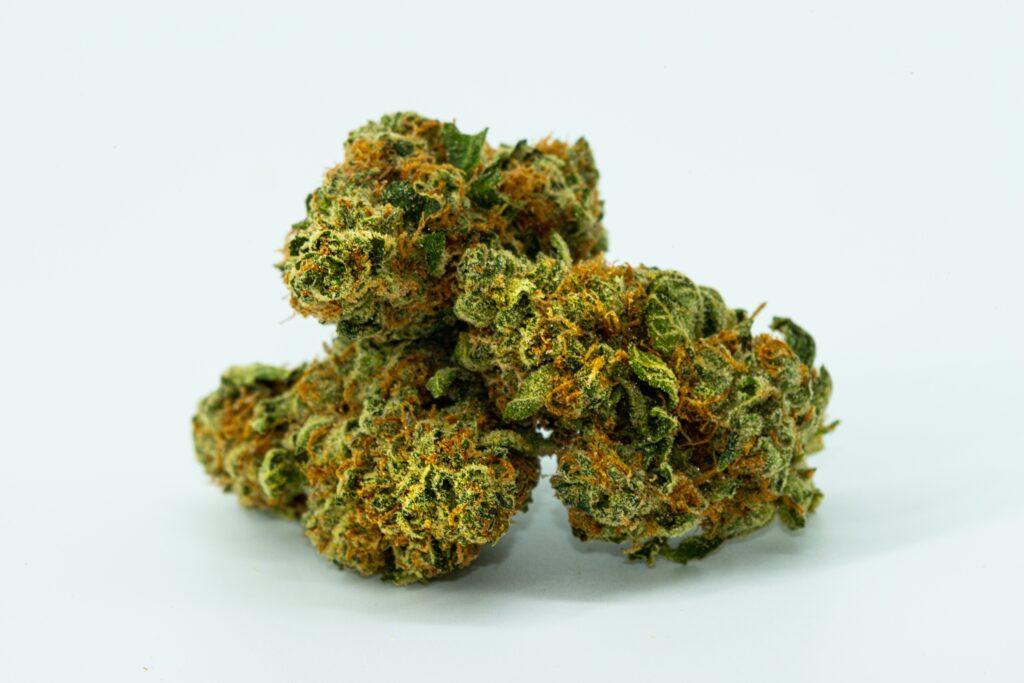
CBD is typically derived from hemp, which contains low levels of THC. THC, on the other hand, is the leading cannabis psychoactive compound. Dabbing THC interacts with cannabinoid receptors in the brain, producing a range of effects, including relaxation, altered perception of time, increased appetite, and potential anxiety or paranoia in higher doses.
How To Identify If Someone Is Dabbing THC?
Each person is unique and will respond to dabbing in a particular way. Dabbers frequently display a variety of warning signals and may exhibit symptoms of varying degrees of severity. It’s vital to remember that not everyone who demonstrates one or more of the following symptoms is unmistakably dabbing. However, it can be helpful for anyone to be aware of some of the warning signs of dabbing. Examples of some of the often reported symptoms and signs that someone may be dabbing are included below:
- Poor judgment.
- Attention difficulty.
- Swollen eyelids.
- Dry mouth.
- Bloodshot eyes.
- Relaxation.
- Increased appetite.
- Heightened body sensations.
- Stimulation.
- Loss of coordination.
- Memory impairment.
- Distorted perceptions.
- Increased heart rate.
- Drowsiness.
- Nausea.
- Vomiting.
- Impaired memory.
- Foggy thinking.
- Anxiety.
- Panic.
- Decreased problem-solving abilities.
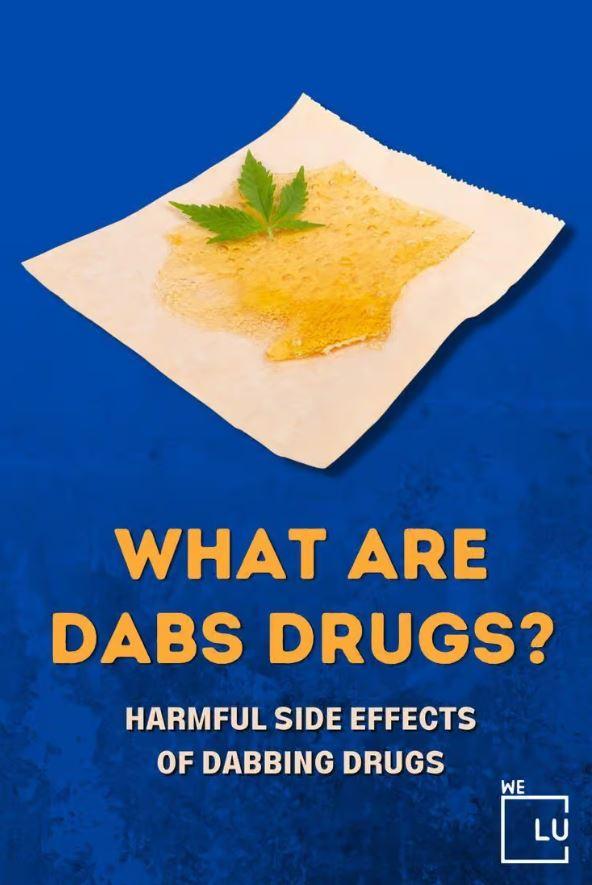
Skip To:
Learn More:
- Marijuana Addiction, Effects, Withdrawal & Treatment
- How Long Does Marijuana Stay In Your System?
- Marijuana Withdrawal Symptoms, Weed Withdrawal Symptoms, Timeline, Dangers & Withdrawal Treatment
- Psychosis Weed, Can Marijuana Trigger Psychosis? Weed Psychosis Signs & Symptoms
- How To Stop Smoking Weed Cold Turkey? Dangers & Effects
- How To Stop Smoking Weed Cold Turkey? Dangers & Effects
- How to Sober Up On Weed? Top 5 Tips On How To Sober Up From Weed. Smart Techniques on How To Get Sober From Weed Fast. Discover How to Flush Weed Out of Your System.
- How to Flush Weed Out of Your System?
- How Long Do Weed Highs Last? Cannabis Effects, Use & Abuse
- Weed Edibles And How To Get Started With Addiction Treatment
What Do Dabs Look Like?
Dabs typically come as a sticky, waxy, or resinous substance. Depending on the extraction process, they can have various textures and consistencies. Typical forms of dabs include the following:
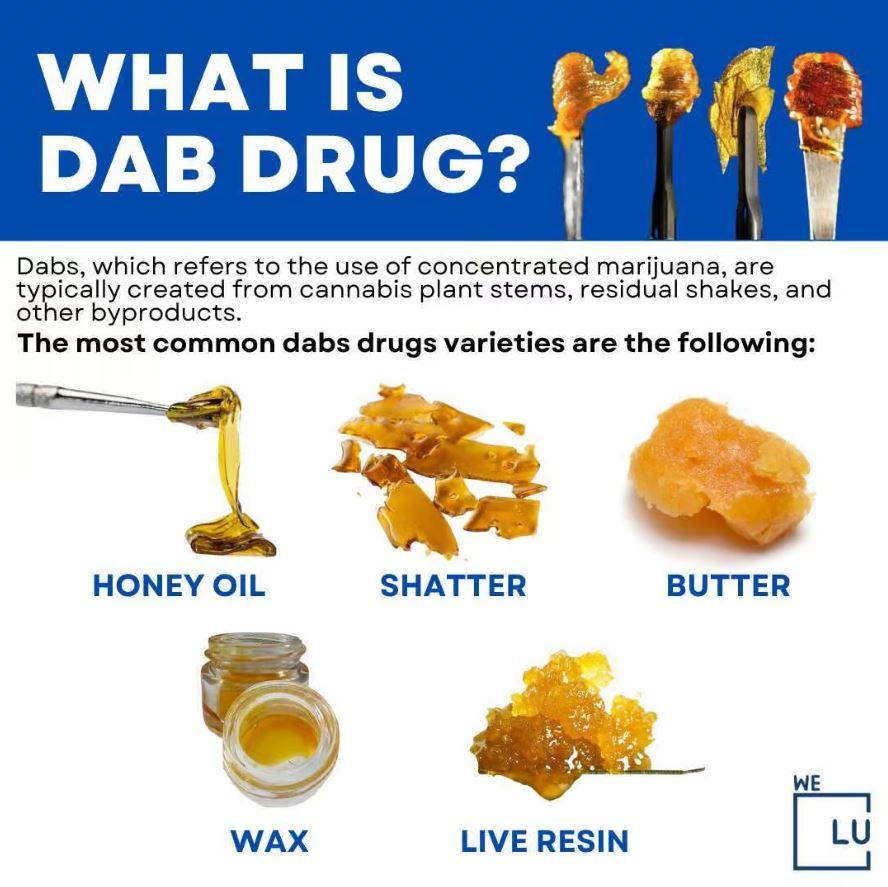
- Shatter: Shatter is a translucent and brittle concentrate resembling a glass sheet. It quickly breaks apart or “shatters” into smaller pieces.
- Wax: Wax concentrates have a soft, malleable texture similar to beeswax or earwax. They can range in consistency from crumbly to sticky and are often opaque.
- Budder: Budder is a smooth and creamy concentrate with a consistency similar to butter or peanut butter. It is often light in color and has a softer texture.
- Crumble: Crumble has a dry and crumbly texture, similar to what the name suggests. It is often easy to break apart into smaller pieces.
- Live Resin: Live resin is a concentrate made using freshly harvested, flash-frozen cannabis flowers. It typically has a more sauce-like or sticky consistency with a high terpene content.
What Is A Dab Pen?
A dab pen, a vape pen, or a wax pen is a portable and discreet device designed explicitly for vaporizing and inhaling cannabis concentrates, such as dabs. It is a battery-powered device with a heating element, a chamber or atomizer to hold the concentrate, and a mouthpiece. Dab pens are typically compact and easy to use, resembling a pen or a small electronic device.
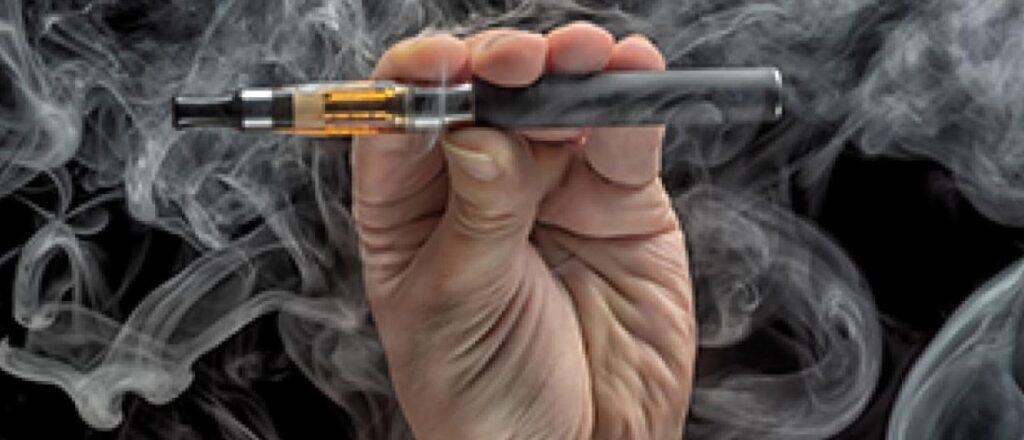
Dabbing requires specific tools and equipment to consume cannabis concentrates correctly. Here are some standard instruments used in dabbing:
- Dab Rig: It is a specialized water pipe for vaporizing and inhaling concentrates.
- Nail or Banger: It is usually made of quartz, titanium, or ceramic and is heated using a torch or an electronic heating element.
- Torch: A butane torch is commonly used to heat the nail or banger to the desired temperature for vaporizing the concentrate. The torch provides high heat levels necessary for proper vaporization. However, electronic heating elements or e-nails are also available as alternatives.
- Dabber Tool: A dabber tool handles and applies the concentrate onto the heated nail or banger.
- Carb Cap: A carb cap is a dome-shaped accessory placed over the nail or banger after applying the concentrate. It helps to regulate airflow and maximize vaporization efficiency.
- Dab Pad or Mat: A dab pad or mat is a non-stick surface placed beneath the dab rig to protect surfaces from heat and concentrate spills.
Dab Drug Side Effect Infographic
It’s crucial to understand that dabbing drugs can have significant risks and dangers in both the short and long term. The specific side effects can vary based on the substance, dose, individual factors, and other variables. If you or someone you’re concerned with is struggling with substance abuse, seeking help from healthcare professionals or substance abuse treatment centers is strongly recommended.
Embed the below “Dab Drug Side Effect” Infographic to your website. The We Level Up addiction treatment center team provides this “Dab Drug Side Effect” infographic. To use the above infographics, you agree to link back and attribute its source and owner at https://welevelup.com/treatment/dabbing/
Dab drug side effect infographic image link: https://welevelup.com/wp-content/uploads/2023/06/Dabbing-3.jpg
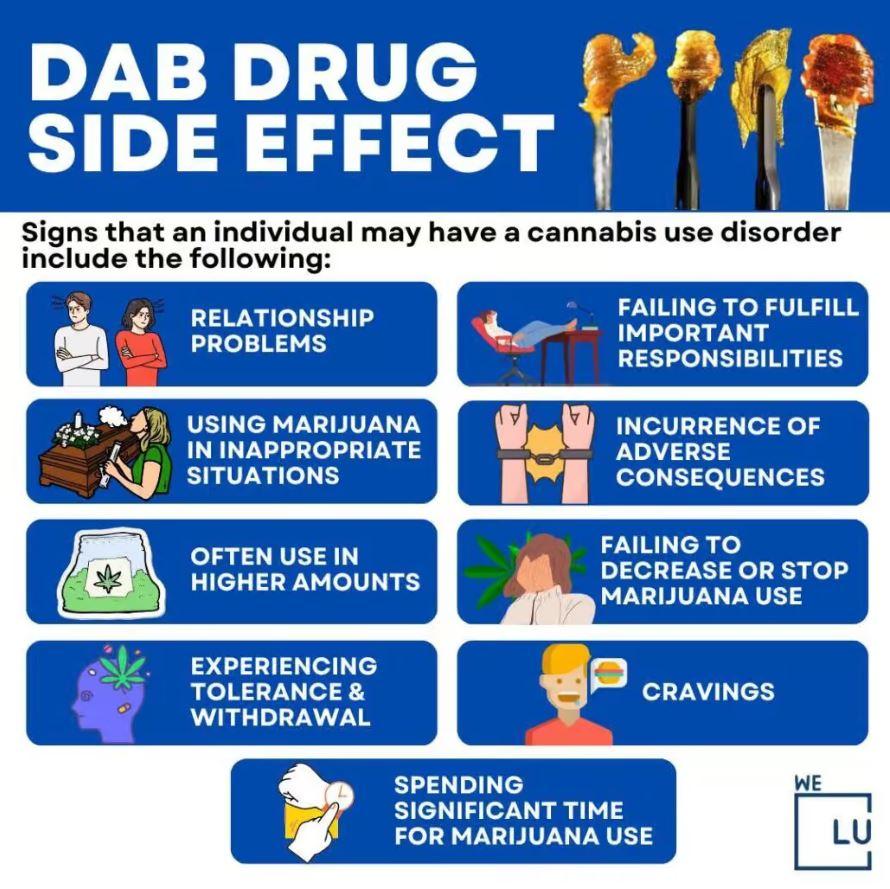
Dab Drugs Fact Sheet
Dabs Meaning Drugs
What is a dab drug? Dabbing also works for other drugs, not only cannabis. Dab meaning drug, often referred to as “hard dabs” or “hard concentrates,” is a term used to describe the act of vaporizing and inhaling highly potent and concentrated forms of various illicit substances, such as synthetic cannabinoids (commonly known as “spice” or “K2”) or concentrated forms of methamphetamine, MDMA (ecstasy), or other stimulant drugs.
These substances are typically processed using solvents or chemical reactions to create a concentrated form that can be heated and inhaled using a dab rig or similar device.
Dabbing drugs presents significant risks and dangers. The high potency of these concentrated substances can lead to a rapid and intense onset of effects, which increases the risk of overdose and adverse reactions. Moreover, creating these concentrated forms often involves using hazardous chemicals, which can lead to dangerous explosions or other safety hazards.
How To Make Dabs?
Making dabs or cannabis concentrates at home can be complex and potentially hazardous. It often involves using solvents such as butane or alcohol to extract the concentrated cannabinoids from the cannabis plant material. We must emphasize that making dabs without proper knowledge and equipment can be highly hazardous, as it poses a risk of explosions, fires, and exposure to harmful chemicals.
How To Smoke Dabs?
If you are worried about dabbing drugs, consulting with professional healthcare for personalized advice is crucial. Here are some tips:
- Ensure you are in a well-ventilated area when smoking dabs to minimize exposure to vapor and potential respiratory irritation.
- Make sure your dab rig and accessories are clean and in good condition. Using dirty or damaged equipment can introduce contaminants or compromise your safety.
- Pay attention to how your body reacts to dabs. Be aware of any adverse side effects, such as increased heart rate, anxiety, or respiratory issues. If you experience any concerning symptoms, consider reducing or discontinuing dab use and consult a healthcare professional.
- Dabbing can cause dehydration, so drink water before, during, and after smoking dabs to stay hydrated. This can help prevent potential complications and support overall well-being.
How Long Does A Dab Pen Stay In Your System?
The main component of concern is the cannabinoid THC, which can be present in some cannabis concentrates used in dab pens. THC can be detected in bodily fluids, such as urine, blood, or saliva, for varying durations.
- For infrequent users, THC from a dab pen may be detectable in urine for approximately 3 to 7 days.
- For regular or heavy users, THC can be detectable for an extended period, up to several weeks or even months.
- Blood and saliva tests typically have a shorter detection window, ranging from a few hours to a few days.
The specific testing method and its sensitivity can also affect the detection window. If you anticipate being tested for substances, it is advisable to allow for a significant buffer period of abstinence to ensure the substance is cleared from your system.
How To Take A Dab?
Ensure that your concentrates come from reputable sources and have undergone proper testing for purity and potency. This can help lower the risk of exposure to contaminants or harmful substances.
Handle hot surfaces and torches with caution to prevent accidents or burns. It’s also crucial to have good ventilation in the dabbing area to minimize exposure to vapor and potential respiratory irritation.
Moreover, pay attention to your body’s signals, and if you experience any adverse effects, such as increased heart rate, anxiety, or difficulty breathing, seek medical attention immediately.
What Is Dab Drug Legality?
The legality of dab drugs, or cannabis concentrates, varies based on the jurisdiction. In some regions, the use and possession of cannabis concentrates may be legal for medicinal and recreational purposes. In contrast, it may be illegal or subject to strict regulations in others.
However, dabbing controlled drugs is generally illegal and poses severe health risks. The use of illicit substances can have severe consequences for an individual’s physical and mental health, as well as legal consequences. If you or someone you’re concerned with is struggling with substance abuse, seeking help from healthcare professionals or substance abuse treatment centers is recommended.

Get Your Life Back
Find Hope & Recovery. Get Safe Comfortable Detox, Addiction Rehab & Dual Diagnosis High-Quality Care.
Hotline(844) 597-1011Dab Drugs & Cannabis Statistics
As of April 2023, several US states have legalized the recreational use of marijuana, including cannabis concentrates. These states include Alaska, California, Colorado, Oregon, Washington, and others. Furthermore, many more states have legalized the medical use of marijuana, which may consist of access to cannabis concentrates. However, please keep in mind that the field of cannabis research and legislation is rapidly evolving.
38
As of April 2023, medical marijuana is legal in 38 states, allowing patients with qualifying conditions to access cannabis for therapeutic purposes.
Source: NCSL
43.5 Million
In 2019, roughly 43.5 million people aged 12 or older in the US reported using marijuana in the past year. This represented about 15.5% of the population in that age group.
Source: NCBI
9.8 Million
In 2019, approximately 9.8 million people aged 12 or older in the US reported using marijuana concentrates in their lifetime. However, specific data on dab drugs within that category may not be available.
Source: NSDUH
Dabbing and Depression
According to several studies, marijuana users who use the drug frequently or heavily are likelier than nonusers to have their depression diagnosed. It doesn’t seem like marijuana causes depression, though.
Marijuana usage is probably caused by the exact genetic, environmental, or other causes that cause depression. Marijuana use among those who are depressed has been linked to reduced depressive symptoms. Due to the drug’s dulling effects on sensations and emotions, heavy users may come off as depressed.
There are associations between marijuana use and further mental health issues. In those more susceptible to psychosis, marijuana usage may result in schizophrenia or a separation from reality (psychosis). If marijuana usage persists, the symptoms of a documented psychotic disorder may worsen.
While some individuals may experience temporary mood elevation or relaxation from dabbing, excessive or prolonged use of high-potency THC concentrates can lead to dysregulation of brain chemicals and neurotransmitters, potentially exacerbating or triggering symptoms of depression in susceptible individuals.
The Risks Of THC Dab Abuse
Abusing THC dabs, which are highly concentrated forms of cannabis, can pose several risks to both physical and mental health. It’s critical to approach THC dab use responsibly, in moderation, and within the boundaries of legal regulations. If you or someone you’re concerned with is struggling with dab abuse or experiencing adverse effects, seek professional help from healthcare providers or addiction specialists.
- Increased Tolerance and Dependence: Regular and excessive dabbing can rapidly increase tolerance, meaning you may need higher doses to achieve the desired effects.
- Respiratory Issues: The high temperatures and concentrated nature of dabs may lead to coughing, wheezing, bronchitis, or even lung damage over time.
- Cognitive Impairment: THC affects cognitive function, including memory, attention, and problem-solving abilities. Excessive dabbing can impair cognitive function and negatively impact academic or occupational performance.
- Mental Health Effects: Dabbing high-potency THC concentrates can heighten the risk of developing or exacerbating mental health issues, such as anxiety, paranoia, or psychosis. Individuals with a history of psychiatric disorders may be particularly vulnerable to these effects.
- Social and Functional Impairment: Excessive dabbing can lead to social withdrawal, reduced motivation, and impaired daily functioning. It may also strain personal relationships and hinder responsibilities and goals.
- Legal and Safety Risks: THC dabs may still be illegal in many jurisdictions, and engaging in dab abuse can result in legal consequences. Moreover, impaired judgment and coordination from dabbing can increase the risk of accidents or injuries.
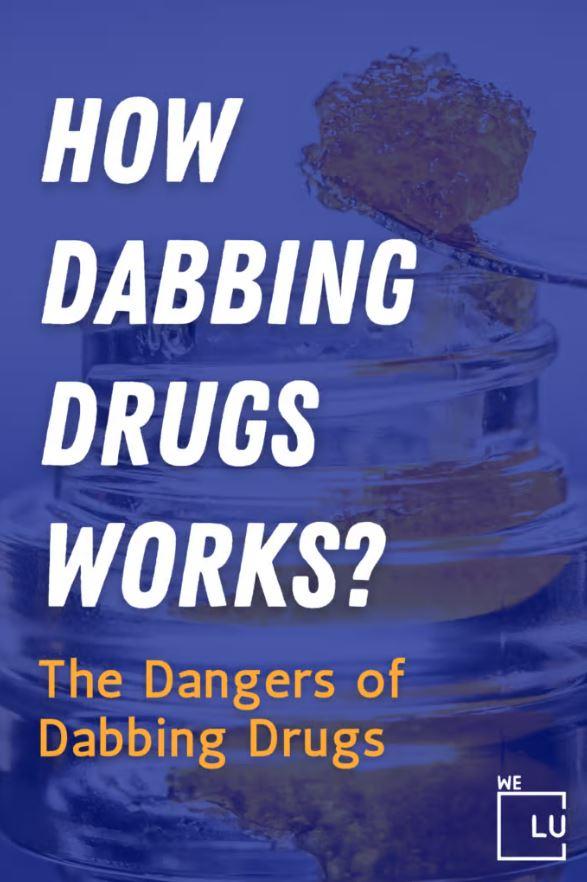
Can Drug Dogs Smell Dab Pens?
Drug dogs are trained to detect the presence of certain illicit substances, including marijuana. Dab pens, also known as vape pens, can be used to consume concentrated forms of cannabis, which can emit a noticeable odor. Therefore, drug dogs can smell dab pens if they are trained to detect marijuana.
Get Help. Get Better. Get Your Life Back.
Searching for Accredited Drug and Alcohol Rehab Centers Near You?
Even if you have failed previously and relapsed, or are in the middle of a difficult crisis, we stand ready to support you. Our trusted behavioral health specialists will not give up on you. When you feel ready or just want someone to speak to about therapy alternatives to change your life call us. Even if we cannot assist you, we will lead you to wherever you can get support. There is no obligation. Call our hotline today.
(844) 597-1011Dabs Weed Withdrawal Signs & Symptoms
When someone stops using dabs or any form of high-potency THC concentrates after prolonged and heavy use, they may experience withdrawal symptoms. These symptoms can differ in intensity and duration based on individual factors such as frequency and duration of use. Here are some common signs and symptoms of dabs weed withdrawal:
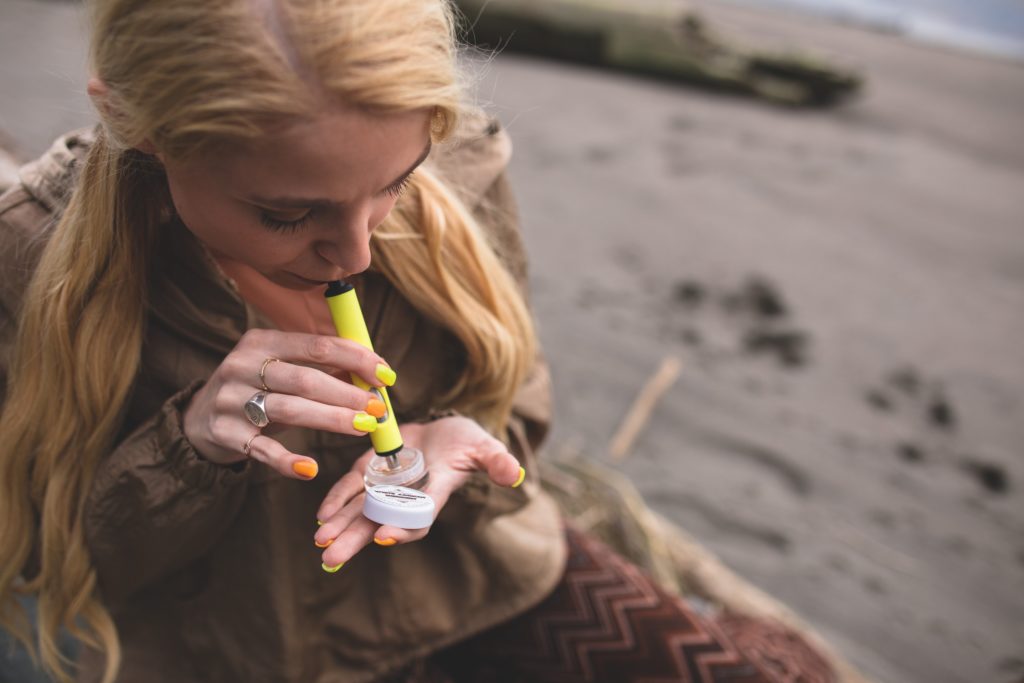
Addiction To Dabbing Warning
Withdrawal symptoms from dabbing weed can vary from person to person, and not everyone will experience the same intensity or combination of symptoms. If you or someone you’re concerned with is considering quitting dabs or experiencing withdrawal symptoms, seeking support from healthcare professionals, addiction counselors, or support groups can guide and assist throughout the process.
- Irritability and Mood Changes: Many individuals may experience increased irritability, mood swings, anxiety, or depression during the withdrawal period. Emotional instability and difficulty managing stressors are typical withdrawal symptoms.
- Sleep Disturbances: Sleep patterns can be disrupted during dabs and weed withdrawal. Insomnia, vivid dreams, nightmares, or changes in sleep duration and quality are possible symptoms.
- Appetite and Digestive Issues: Some people may experience changes in appetite, including decreased or increased appetite. Nausea, stomach discomfort, and digestive irregularities, such as diarrhea or constipation, may also occur.
- Physical Discomfort: Headaches, muscle aches, and general discomfort can be experienced during dabs weed withdrawal. These symptoms are typically temporary but can be distressing for some individuals.
- Cravings and Psychological Distress: Cravings for dabs or cannabis products may arise during withdrawal. These cravings and psychological distress, such as restlessness, difficulty concentrating, or feeling on edge, can make the withdrawal process challenging.
First-class Facilities & Amenities
World-class High-Quality Addiction & Mental Health Rehabilitation Treatment
Rehab Centers TourRenowned Addiction Centers. Serene Private Facilities. Inpatient rehab programs vary.
Addiction Helpline(844) 597-1011Proven recovery success experience, backed by a Team w/ History of:
15+
Years of Unified Experience
100s
5-Star Reviews Across Our Centers
10K
Recovery Success Stories Across Our Network
- Low Patient to Therapist Ratio
- Onsite Medical Detox Center
- Comprehensive Dual-Diagnosis Treatment
- Complimentary Family & Alumni Programs
- Coaching, Recovery & Personal Development Events
Weed Dabbing Addiction Treatment
Drug addiction and abuse are relatively recent concerns that plague our nation. A person might need to receive professional treatment to stop using this drug. How intense their dependence is one of several variables that may affect this. However, quitting dabbing drugs on one’s own might be pretty challenging.
What is dab weed? Dabs are made from marijuana (dabbing weed). Thus, people typically believe it is safe. However, due to how concentrated it is, it has the potential for people to be addicted to dabbing. It can cause withdrawal symptoms when stopped, making giving it up much harder than beating a cannabis addiction.
Cannabis addiction treatment typically involves a combination of behavioral therapies, counseling, support groups, and, in some cases, medication. If you have concerns about the misuse of dabbing weed, contact We Level Up treatment center for treatment resources and options. We help people with problems with substance use and mental health. Call us today to get started. Each call is private and confidential.
World-class, Accredited, 5-Star Reviewed, Effective Addiction & Mental Health Programs. Complete Behavioral Health Inpatient Rehab, Detox plus Co-occuring Disorders Therapy.
CALL(844) 597-1011End the Addiction Pain. End the Emotional Rollercoaster. Get Your Life Back. Start Drug, Alcohol & Dual Diagnosis Mental Health Treatment Now. Get Free No-obligation Guidance by Substance Abuse Specialists Who Understand Addiction & Mental Health Recovery & Know How to Help.
Top 5 Dabbing Meaning FAQs
-
Will a dab pen show on drug test?
A dab pen containing THC can potentially show up on a drug test. Drug tests typically look for THC presence or its metabolites in the body, regardless of the method of consumption. Therefore, a THC-containing dab pen could result in a positive drug test for THC.
-
What is dabbing weed?
Dabbing weed refers to consuming highly concentrated cannabis extracts through a process that involves vaporization and inhalation. The extracts used in dabbing, commonly known as “dabs,” are typically produced through solvents like butane or carbon dioxide to extract potent cannabinoids, such as THC or CBD. Dabbing is known for its powerful effects due to the high concentration of cannabinoids, offering a quick and intense experience compared to other methods of cannabis consumption.
-
What are dabs drugs?
“Dabs” is a term commonly used to refer to highly concentrated forms of cannabis extracts. Dabs are known for their high potency and are typically consumed by vaporizing and inhaling the concentrated extract.
-
How to use a dab rig?
To dab weed with a rig, start by heating the nail (typically made of quartz, titanium, or ceramic) using a butane torch until it’s hot. Allow it to cool for a short period to reach the desired temperature for dabbing. Apply a small amount of the cannabis concentrate (dab) onto the hot nail, and inhale the vapor through the mouthpiece while covering the nail with a carb cap to control airflow. The laws can change over time, so it’s always a good idea to consult up-to-date legal sources or a legal professional for the most accurate and current information if you dab drugs.
-
Is dabbing illegal?
The legality of dabbing in the United States is closely tied to the legality of cannabis and its derivatives. Cannabis laws vary from state to state. While some states have legalized recreational and medicinal cannabis, others have more restrictive laws or prohibit it altogether. It’s essential to refer to the specific rules of the state in question to determine the legality of dabbing and cannabis-related activities.
How Long Do Edibles Last? Learn the Side Effects of Weed, CBD Edibles Timeline & Half-Life.
The duration for which edibles and dabbing cannabis products stay in your system can vary based on several factors, including the individual’s metabolism, frequency of use, dosage, and the specific compounds in the products. Here are some general guidelines:
- Edibles: The effects of cannabis-infused edibles may last longer than other consumption methods. The liver metabolizes THC into a more potent form called 11-hydroxy-THC, which can prolong the duration of its effects. In terms of detection in drug tests, THC can regularly be detected in urine for up to 3-30 days after a single use, depending on various factors.
- Dabbing: What is a dab weed? Weed dabbing involves vaporizing and inhaling concentrated cannabis extracts, often known as “dabs” or “wax.” These extracts are typically high in THC. The detection duration in the body is similar to other forms of cannabis use. THC can be seen in urine for up to 3-30 days after dabbing, based on the frequency and amount of use.
Suppose you have concerns about drug testing or the potential effects of cannabis use. In that case, it’s advisable to consult with a healthcare professional or a specialist in toxicology for more accurate and personalized information. Watch the video below for further details on how long edibles last.
Experience Transformative Recovery at We Level Up Treatment Centers.
See our authentic success stories. Get inspired. Get the help you deserve.
Start a New Life
Begin with a free call to an addiction & behavioral health treatment advisor. Learn more about our dual-diagnosis programs. The We Level Up Treatment Center Network delivers recovery programs that vary by each treatment facility. Call to learn more.
- Personalized Care
- Caring Accountable Staff
- World-class Amenities
- Licensed & Accredited
- Renowned w/ 100s 5-Star Reviews
We’ll Call You
Search We Level Up Dabbing Detox, Mental Health Topics & Resources
Sources
[1] What You Should Know About Marijuana Concentrates/ Honey Butane Oil – Get Smart About Drugs (.gov)
[2] Raber JC, Elzinga S, Kaplan C. Understanding dabs contamination concerns of cannabis concentrates and cannabinoid transfer during dabbing. J Toxicol Sci. 2015 Dec;40(6):797-803. doi 10.2131/jts.40.797. PMID: 26558460.
[3] NIDA. “Is marijuana addictive?.” National Institute on Drug Abuse, 13 Apr. 2021, https://nida.nih.gov/publications/research-reports/marijuana/marijuana-addictive Accessed 23 Jun. 2023.
[4] RESULTS FROM THE 2017 NATIONAL SURVEY ON DRUG USE AND HEALTH: DETAILED TABLES – Substance Abuse and Mental Health Services Administration (SAMHSA)
[5] Sherman BJ, McRae-Clark AL. Treatment of Cannabis Use Disorder: Current Science and Future Outlook. Pharmacotherapy. 2016 May;36(5):511-35. doi 10.1002/phar.1747. PMID: 27027272; PMCID: PMC4880536.
[6] Turner AR, Agrawal S. Marijuana. [Updated 2022 Aug 22]. In: StatPearls [Internet]. Treasure Island (FL): StatPearls Publishing; 2023 Jan-. Available from: https://www.ncbi.nlm.nih.gov/books/NBK430801/
[7] National Academies of Sciences, Engineering, and Medicine; Health and Medicine Division; Board on Population Health and Public Health Practice; Committee on the Health Effects of Marijuana: An Evidence Review and Research Agenda. The Health Effects of Cannabis and Cannabinoids: The Current State of Evidence and Recommendations for Research. Washington (DC): National Academies Press (US); 2017 Jan 12. 2, Cannabis. Available from: https://www.ncbi.nlm.nih.gov/books/NBK425762/
[8] Marijuana and Public Health – Centers for Disease Control and Prevention (CDC)
[9] Know the Negative Effects and Risks of Marijuana Use – Substance Abuse and Mental Health Services Administration (SAMHSA)
[10] FDA Regulation of Cannabis and Cannabis-Derived Products, Including Cannabidiol (CBD) – Food & Drug Administration (FDA)


